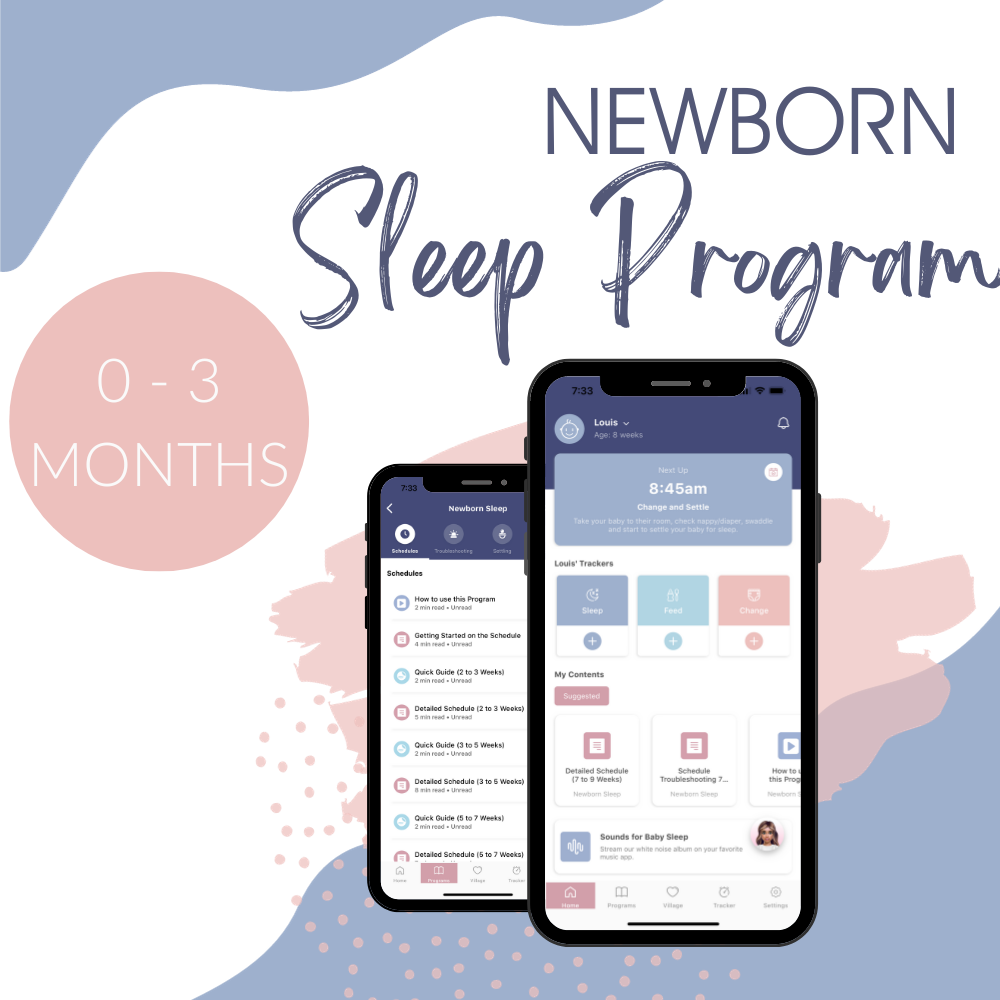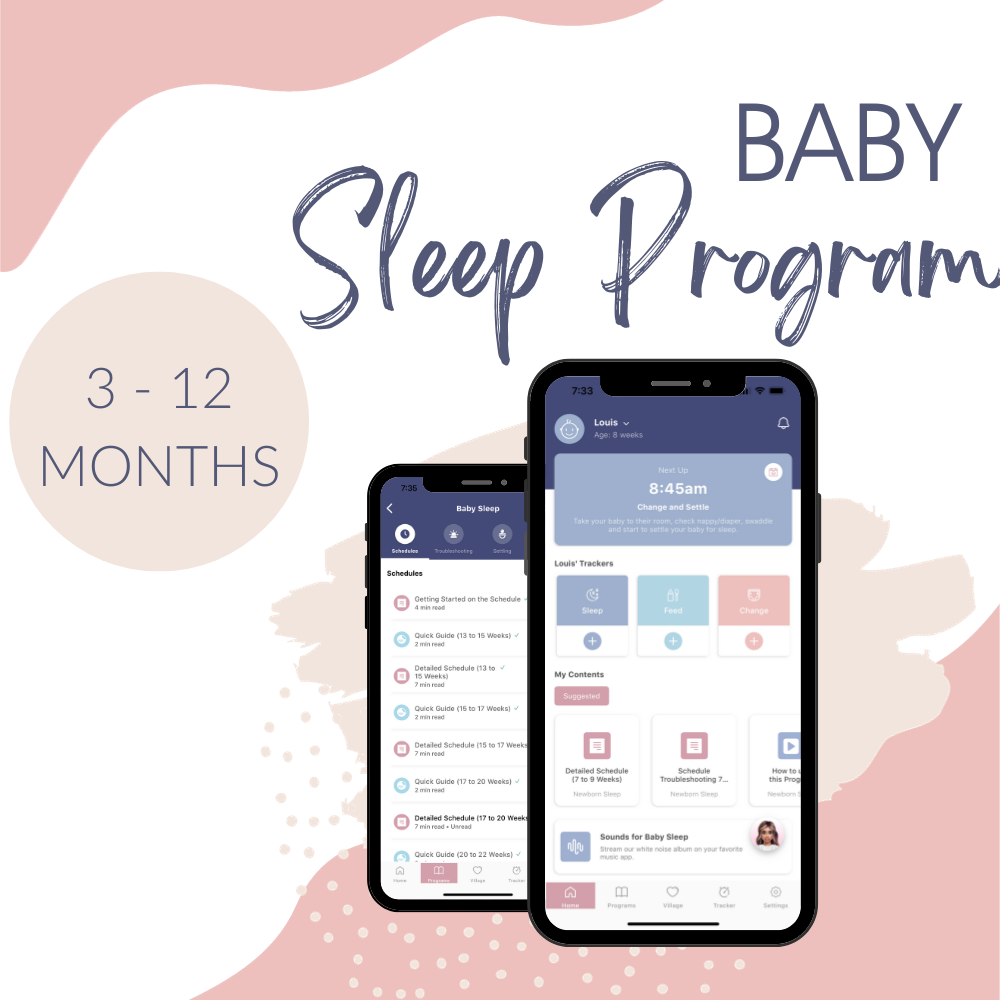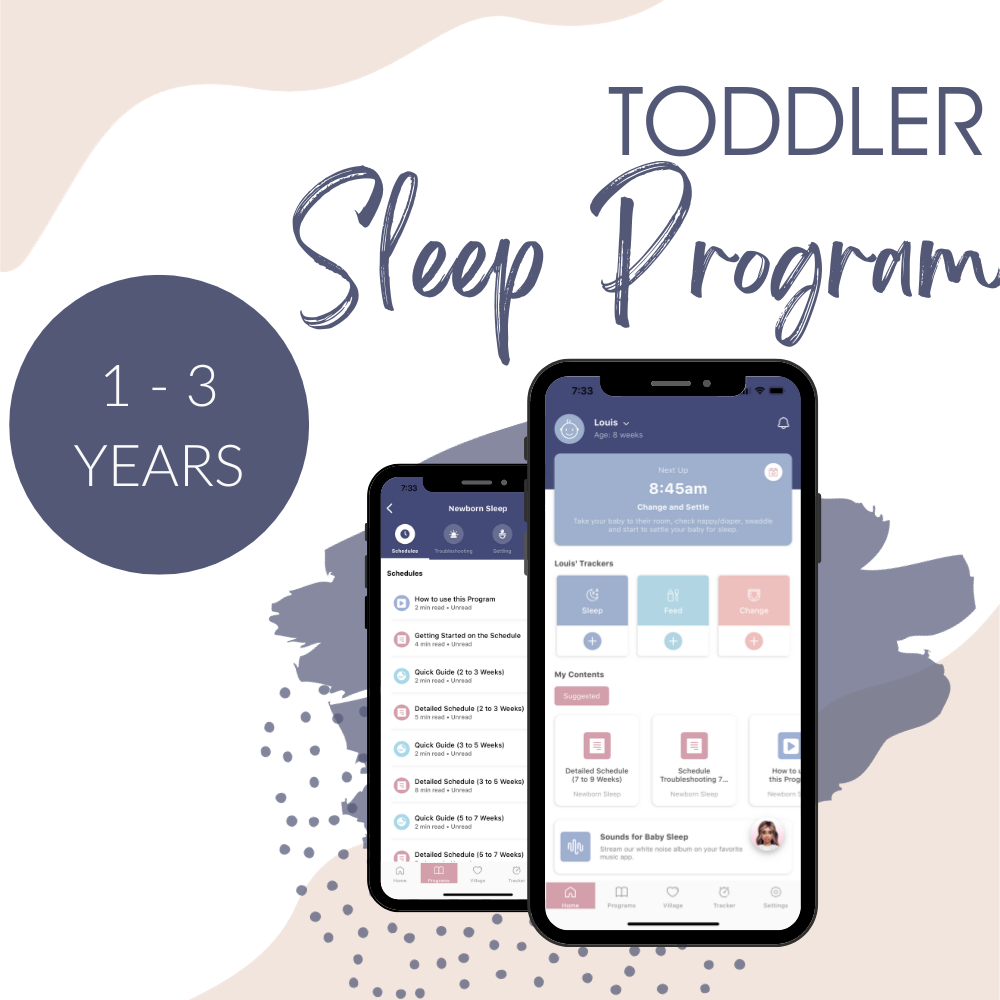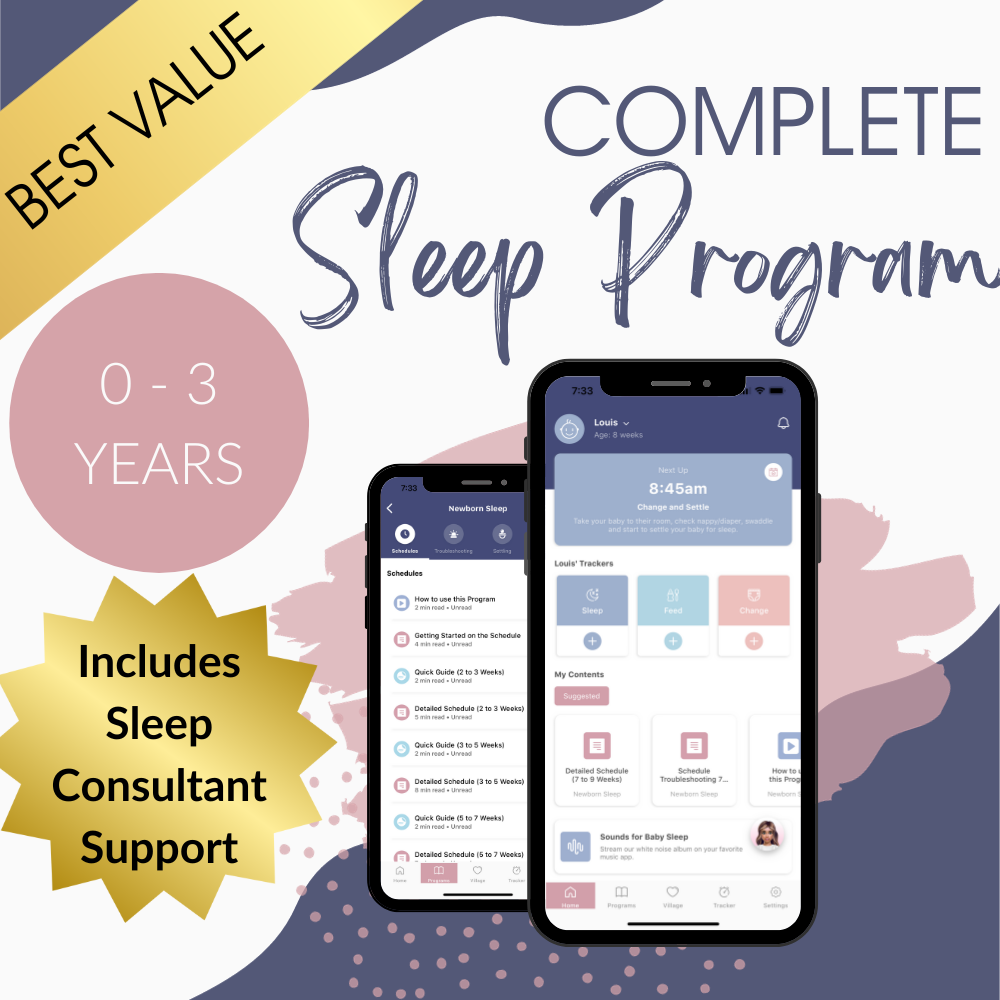
Baby sleep aids: Do they actually work?
When I was pregnant with my first child, I was writing my wish list ready for my baby shower, when my friend turned to me and said, “Don’t forget to put Ewan on the list!”
Huh?
My blank expression told her that I didn’t have a clue who or what ‘Ewan’ was! It turns out that she was referring to ‘Ewan the Dream Sheep’, a baby sleep aid that she swore helped to settle her newborn to sleep.
As I would soon discover, there are loads of sleep aids out there - some of which are even touted as "miracle cures" for your baby's sleep challenges. But do they actually work?
In this article, we’re going to explore some of the most popular baby sleep aids and explain how they work, so you can decide if they are worth all the hype.
Before you break the bank buying every baby sleep gadget out there though, remember there are lots of simple and easy ways that you can improve your little one's sleep. Our Sleep Programs contain everything you need to create the ideal environment for sleep, establish a consistent routine and set up positive sleep habits that will last your wee one for years to come.
In this article:
- What is a baby sleep aid?
- Different types of baby sleep aids
- When and how to stop using sleep aids
- Our recommendations
You CAN have a better night’s sleep!
Whatever your current sleep situation, we've got the tools, the information and the personalised support to help you and your little one reclaim those nights.
Join Now
What is a baby sleep aid?
Put simply, a baby or infant sleep aid is any product designed to make it easier for your little one to sleep. It might help them to settle to sleep without your assistance, or it might help your baby to stay asleep for longer. While most sleep aids are targeted at young babies and their very sleep-deprived parents, there are also sleep aids available for toddlers and children too.
You may have already purchased some sleep aids prior to your baby’s arrival, based on the recommendations of friends or family or their excellent reviews. I know I certainly did with my son. But once he actually arrived, I found that they weren’t necessarily what I needed and some of them he didn’t respond to at all… goodbye Ewan the Dream Sheep!
Sleep deprivation made me desperate for ANYTHING to improve my son’s sleep in those early days. Cue way too many parcels arriving at my door and me frantically trying ALL the sleep gadgets, searching for the magic one that would make my baby sleep.
To save you (and your wallet) from a similar fate, here is a quick guide to some of the most popular baby sleep aids on the market, so you can decide whether or not they are worth it...
Different types of baby sleep aids
There are hundreds of baby sleep aids out there, all claiming to improve your baby’s sleep. Let's take a closer look at some of the most popular ones, including how they work and the benefits and potential drawbacks when it comes to improving your baby's sleep.
Rocking bassinets (eg. Snoo)
You may have heard of the magical Snoo bassinet that takes some weight off your shoulders (quite literally!) and rocks your baby to sleep. Well, there are now a lot of different brands of rocking bassinets out there for you to choose from.
Benefits
- Rocking is a really effective way to settle babies to sleep as the motion mimics the swaying motion they’d have felt in the womb.
- It's easy to use and gives your poor arms a rest, meaning a chance to eat, shower or sleep.
- Some rocking bassinets like the Snoo feature smart sensors to soothe your baby back to sleep when they sense motion or noise, meaning your baby could potentially sleep for longer.
Considerations
- Rocking bassinets with sensors can be very expensive considering they are only used short term (until approximately 6 months old).
- Rocking bassinets without sensors still need to be manually rocked or switched on by an adult.
- Babies over 3-4 months of age can start to associate rocking with sleep, which might make the transition to a cot or crib more challenging.
- Babies naturally stir between sleep cycles and giving them chance to settle themselves back to sleep, without any intervention, helps them learn how to link their sleep cycles. If your baby is rocked back to sleep each time they stir, they aren't getting the opportunity to develop this skill.
Baby shushers and white noise
Baby shushers and white noise are some of the easiest and most effective infant sleep aids available, with this study showing that 80% of babies fall asleep within 5 minutes of listening to white noise. The reason white noise works so well is because it mimics the sounds of the womb, which triggers a baby's innate calming reflex.
We are big advocates for white noise and have created our own Perfect Sounds for Baby Sleep album, which features ten different tracks to choose from.
Benefits
- White noise is a positive sleep association that works well to soothe a crying or unsettled baby.
- Continuous white noise can block out household noises that might wake your baby and also helps older babies to link their sleep cycles overnight - meaning more sleep for everyone!
- White noise is portable and can easily be used for naps out and about or when you are travelling.
Considerations
- Shushers or white noise machines that turn off after a period of time aren't going to be as effective as continuous white noise when it comes to linking sleep cycles or blocking out household noises.
- Your baby will come to rely on white noise to settle to sleep but once they are over 12 months old, if you want to wean them off the white noise, it's easy to do so - simply reduce the volume over time. There's no harm in using white noise for as long as you like though!
Lights and sounds (eg. Glow Dreaming, Lulla, Ewan the Dream Sheep)
In this category we've got night lights and sound machines, projectors, light-up mobiles that play lullabies, cuddly toys that have in-built lights and sounds (I'm looking at you Ewan!).... there are literally hundreds of different products out there.
You can find an in-depth review of the Lulla doll HERE
The idea behind all of these sleep gadgets is that it gives your baby or toddler something calming to watch or listen to, or even cuddle, as they go to sleep.
Benefits
- Once your child reaches the age of 2 years, they can begin to have nightmares and be genuinely scared of the dark. Having a nightlight (especially one built into a cuddly toy that they can hold) can provide a lot of comfort and reassurance.
- Listening to lullabies can help older children wind down and get ready for sleep. It can also be a 'quiet time' activity when they drop their nap.
Considerations
- Mobiles and light shows give your wee one something to look at in bed, when what you actually want is for them to close their eyes and go to sleep!
- If your baby or toddler is under 2 years old, we recommend a completely dark room for sleep. Any form of light is going to be too stimulating and make it hard for them to settle and sleep well.
- If the lights or sounds that you are using shut off after a set amount of time, your baby may need you to turn it back on when they wake between sleep cycles (roughly every 45 minutes in the day and every 2 hours at night).
Dummies or pacifiers
Whether you call it a dummy, pacifier or soother, you've probably considered using one for your baby at some point! Pacifiers have a bit of a bad rap BUT they can actually be a really helpful sleep aid for both younger and older babies.
You can read more about when and why pacifiers work HERE.
Benefits
- Sucking is a soothing motion for babies, which can help them settle to sleep.
- Pacifiers can help parents to move away from feeding their baby to sleep, when their baby is just sucking for comfort rather than genuine hunger.
- Some research suggests the use of a pacifier can reduce the risk of SIDS.
- A pacifier is portable, so you can use it for naps out and about, at daycare or when you are travelling.
Considerations
- Depending on when and how you introduce the pacifier, it has the potential to impact breastfeeding so we would recommend talking to a lactation consultant first.
- Pacifiers can mask hunger, making it harder to know when to feed your baby overnight.
- Pacifiers need to be sterilized regularly for hygiene purposes.
- Until your baby is old enough to replace the pacifier themselves (usually between 6-8 months), they will be relying on you to replace the pacifier for them. From around 4 months old, this means you might be replacing the pacifier as frequently as every 2 hours overnight.
Swaddle (eg. Love to Dream, ErgoCocoon, Miracle Blanket)
A swaddle is one of the best baby sleep aids you can use for your newborn. This is because it mimics the snug feeling of being in the womb, helping your baby to feel safe and secure.
Say goodbye to sleepless nights.
Join over 300,000 families worldwide who are enjoying excellent sleep with our Sleep Programs, created by experts in the field of pediatric sleep.
Buy Now
Luckily, the days of having to learn how to wrap your baby up like a burrito in a huge piece of fabric are gone! Now you can find specially designed swaddle blankets and suits that make the process easy peasy. It can take a bit of trial and error to find a swaddle that your baby likes though - some prefer arms-up and others arms-down. You can find some of our favourite swaddle options HERE.
Benefits
- Swaddling suppresses the Moro (startle) reflex, which can cause your baby to startle themselves awake as they come into a lighter stage of sleep.
- Using a TOG rated swaddle takes out the guesswork when it comes to dressing your baby for bed. Simply follow the temperature and clothing and guide and voila, no more worrying about whether your baby is too hot or too cold!
Considerations
- Ensure your swaddle is a breathable fabric like wool, cotton or bamboo. Avoid synthetic fabrics like fleece and polar fleece which can cause a baby to overheat.
- Be sure to learn how to swaddle safely, with the fabric away from their face and plenty of room for their hips to move.
- When your baby starts rolling, you will need to remove the swaddle for safe sleep. Find out how HERE.
Baby sleeping bags or sleep sacks
After the swaddle you can upgrade your baby to a sleeping bag or sleep sack and once again, there are a HUGE variety to choose from.
Benefits
- Your baby's sleeping bag or sleep sack will become a positive sleep association for them over time - when they see the sleeping bag come out, they will know it is time for sleep!
- A sleeping bag enables your baby to move freely in their sleep, whilst still keeping warm. Duvets and blankets can be easily kicked off, causing your baby to wake up cold.
- Using a TOG rated sleeping bag or sleep sack takes out the guesswork when it comes to dressing your baby for bed.
Let's get your little one's sleep sorted ASAP!Our award-winning Sleep Programs will solve your baby's sleep challenges in no time. Take advantage of our new low prices while they last!
Buy Now
Considerations
- Ensure your sleep sack is a breathable fabric like wool, cotton or bamboo. Avoid synthetic fabrics like fleece and polar fleece which can cause a baby to overheat.
- As your child gets older, they may figure out how to un-do their sleeping bag so keep this in mind when choosing between things like poppers or zippers!
Cuddlies or comforters (eg. Cuski, Snuggin)
Is there anything cuter than seeing a little one snuggled up with their favourite cuddly? Helping your child form an attachment to a cuddly or comforter can provide them comfort when they are tired, sick, sad or anxious.
Benefits
- If you mainly use a cuddly or comforter for sleep, it will become a positive sleep association for your little one, signalling to them that it’s time for bed.
- A cuddly or comforter is portable, so you can use it for naps out and about, at daycare or when you are travelling.
Considerations
- Your little one will likely get so attached to their cuddly or comforter that they can't sleep without it so be prepared to have it around long term. Buy two (or more!) identical comforters so you always have a spare in case one gets lost, or left at daycare, or needs a wash.
- Safe sleep guidelines vary depending where you live but in most countries, it is advised that you do not leave a comforter in your baby's cot or crib until they over 6 months of age and have good hand/eye/mouth coordination.
When and how to stop using baby sleep aids
There are three main reasons why you might need to stop using a baby sleep aid:
- It is no longer safe to use the sleep aid. For example, your baby has outgrown their rocking bassinet or they have learnt to roll so you need to stop swaddling now.
- Your little one is no longer interested in the sleep aid. For example, your toddler used to settle to sleep with a comforter but now they prefer a teddy, or your baby has started spitting out the pacifier.
- The sleep aid is hindering sleep, rather than helping. For example, your baby is getting distracted by their night light and not going to sleep, or your baby is waking every hour to have their pacifier replaced.
If you’ve reached the point where you think it’s time to say ‘goodbye’ to your little one's sleep aid, we suggest you try removing it gradually. For example:
- turning down the volume on their white noise or sound machine each day
- using the bassinet to rock them until drowsy rather than all the way to sleep
- removing the swaddle or pacifier one nap at a time
If you need to remove a sleep aid due to safety though, it is best to do this straight away. Your little one may be unsettled for a few days but the more consistent you are, the quicker they will adjust.
Our recommendations...
Most parents will use a sleep aid (or two, or three!) at some point in their baby’s life. After all, we all want better sleep!
If you’ve managed to find a "miracle" product that helps your baby sleep all night and is safe to use, congratulations, that is great! For most parents though (myself included), no baby sleep aid is going to solve all of their sleep challenges. This is because baby sleep is much more complicated than that!
If your baby is a poor sleeper, day or night (or both), the first thing you NEED to do is get them in a good, age-appropriate sleep pattern. This will ensure they are getting the right balance of awake time and day sleep, to allow them to settle easily and sleep well overnight. An over or under tired baby is not going to settle or sleep well, no matter what product you’re using!
So before you spend a fortune on baby sleep aids, hoping for a miracle fix, do yourself a favour and download our Little Ones App. You'll get instant access to our trusted sleep solutions, age-appropriate schedules, gentle settling methods and more. And you may find that you don't need that expensive sleep gadget after all!
Bibliography
Burnham, M. M., Goodlin-Jones, B. L., Gaylor, E. E., & Anders, T. F. (2002). Use of Sleep Aids During the First Year of Life. Pediatrics, 109(4), 594–601. https://doi.org/10.1542/peds.109.4.594
NHS Choices. (2023). Reduce the risk of sudden infant death syndrome (SIDS). https://www.nhs.uk/conditions/baby/caring-for-a-newborn/reduce-the-risk-of-sudden-infant-death-syndrome/
Spencer, J. A., Moran, D. J., Lee, A., & Talbert, D. (1990). White noise and sleep induction. Archives of Disease in Childhood, 65(1), 135–137. https://doi.org/10.1136/adc.65.1.135
The Lullaby Trust (2022, April 19). Dummies and SIDS. https://www.lullabytrust.org.uk/safer-sleep-advice/dummies-and-sids/
The Lullaby Trust (2022, November 4). How to choose baby sleeping products: our evidence-based advice. https://www.lullabytrust.org.uk/safer-sleep-advice/sleeping-products/





